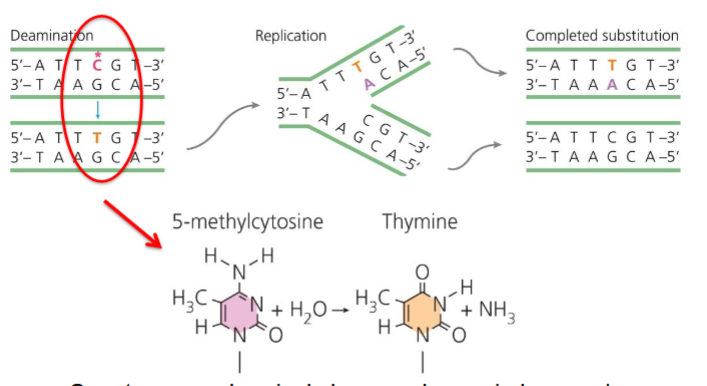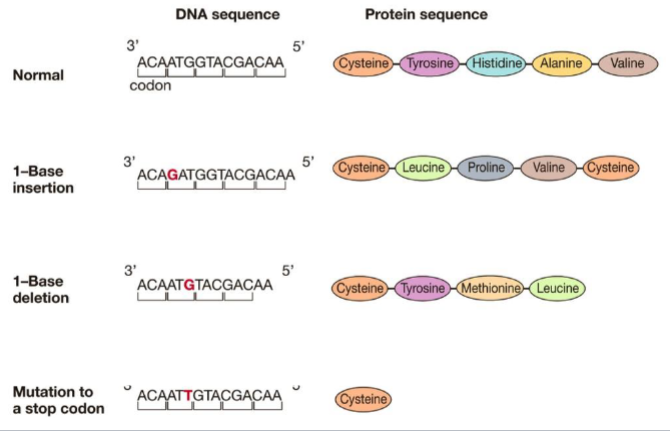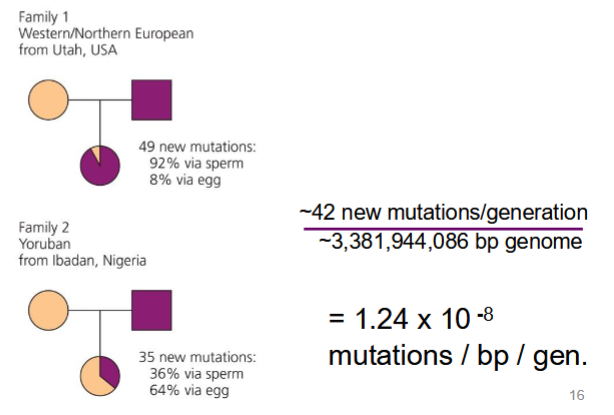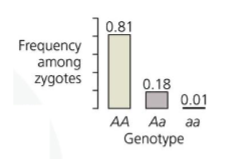Lecture 17 - Mutation, Gene Linkage, Recombination - part 1
1/7
Earn XP
Description and Tags
included on exam 3
Name | Mastery | Learn | Test | Matching | Spaced |
|---|
No study sessions yet.
8 Terms
mutation
the source of new genetic variation
the origin of new alleles
can be a change in nucleotide sequence, gene duplication, change in chromosome structure, or whole genome duplication
point mutations
single base-pair changes due to uncorrected mistakes before or during DNA replication
effect on an amino acid largely depends on which base in a codon mutates:
most changes in the first position change the amino acid
all changes in the second position change the amino acid
most changes in the third position do not change the amino acid

indels
single-base-pair insertions or deletions due to uncorrected mistakes during DNA replication
if not a multiple of three, causes frameshift mutation
frameshift mutation
a mutation resulting an altered amino acid sequence because of a base insertion or deletion
can result in altered amino acids, or an early stop codon

things to note about mutation
mutations need to happen in the germ line to be inherited
single point mutations do not produce new species
mutations happen randomly (where they happen is random, even if the rate they happen can be increased by stressors)
how to measure the mutation rate
# of new mutations per base pair per generation
historically needed to be done with phenotypic variants
in humans: can be estimated by parent-child trio sequencing (illustrated in the picture)
varies across the tree of life

example: mutations changing allele frequencies
initial allele frequencies: A = 0.9, a = 0.1
mutation rate: 1/10,000 A alleles mutate to a per generation
in a population of 10,000: A = 9000, a = 1000
after mutation → A = 8,999, a = 1,001 (population numbers)
allele frequencies after mutation: A = 0.8999, a = 0.1001

calculating allele frequency change with mutation
(assuming you are given initial allele frequencies and mutation rate)
calculate initial frequencies by the denominator of the mutation rate (because denominator serves as a total population)
subtract or add the numerator of the mutation rate to the numbers found above (add if the mutation favors that allele, subtract if the mutation does not favor that allele)
convert those new numbers into decimals → result is your new allele frequencies after mutation